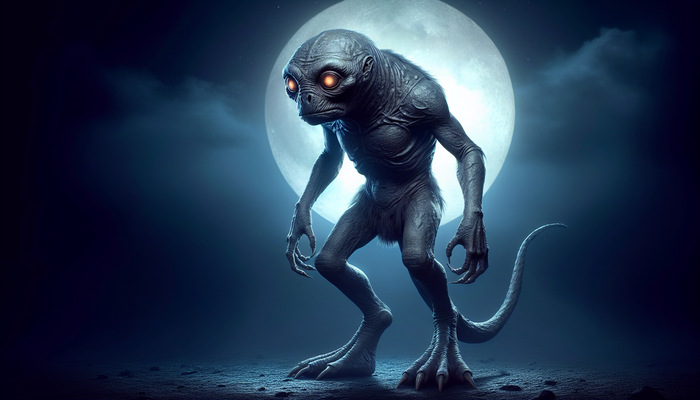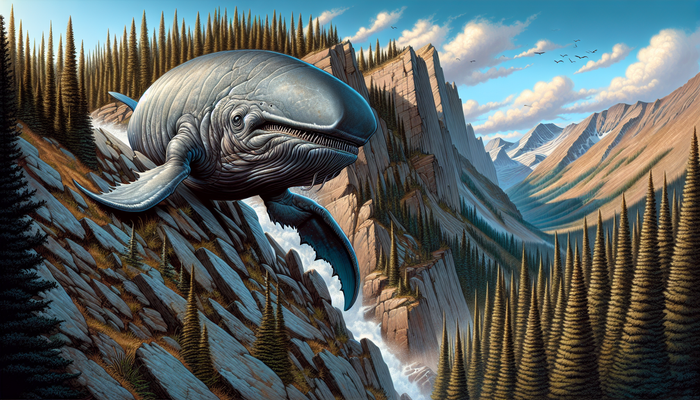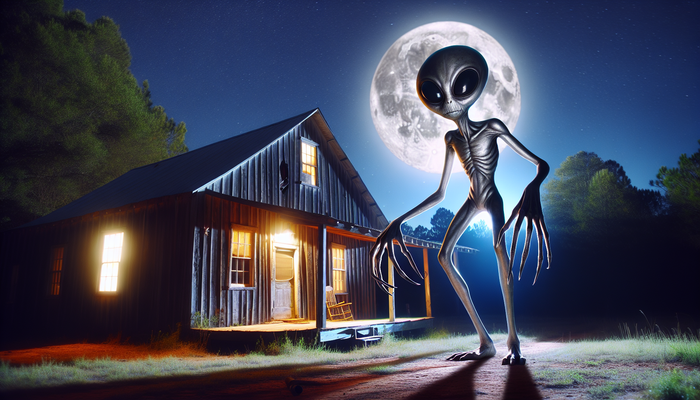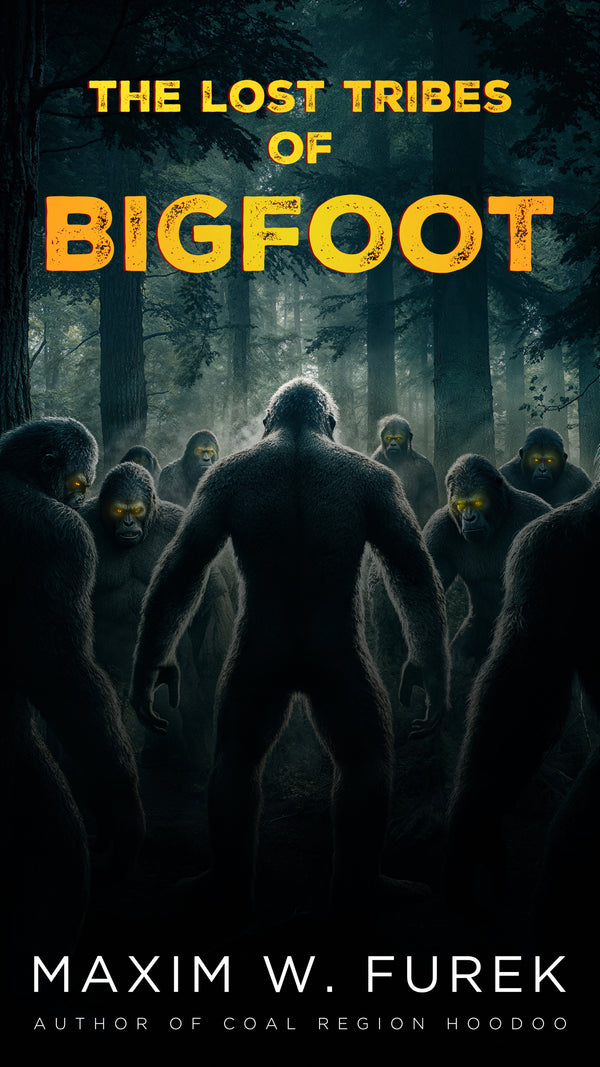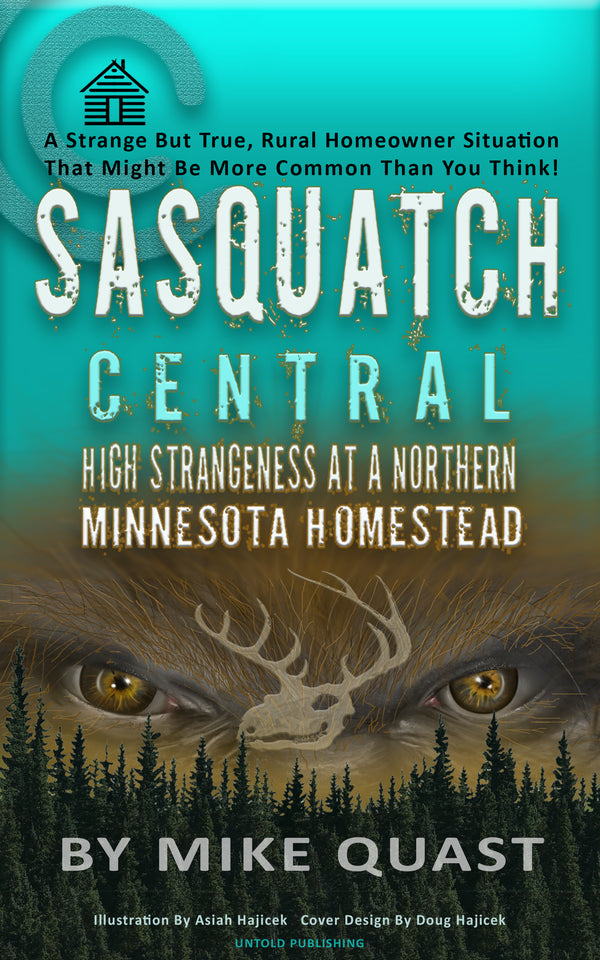Ohio's Grassman: Exploring the State's Bigfoot Sightings

By Lucas Jennings, Cryptozoologist
Picture this: you're hiking through a dense forest, the sun dappling the ground through the canopy of leaves above. The only sounds are the crunch of twigs beneath your feet and the occasional chirp of a bird. Suddenly, you hear a rustle in the bushes, followed by a low, guttural growl. Your heart races as you catch a glimpse of a large, hairy figure darting through the trees. Could it be? Is it possible that you've just had a brush with the elusive creature known as Bigfoot?
For many, the idea of Bigfoot is nothing more than a myth, a legend born from the imaginations of those who spend too much time in the wilderness. But for others, Bigfoot is a very real possibility, a creature that has managed to evade capture and scientific study for decades. And while the Pacific Northwest may be the most well-known region for Bigfoot sightings, there's another state that has been quietly racking up its own impressive tally of encounters: Ohio.
Yes, you read that right. Ohio, the Buckeye State, home to rolling hills, vast farmlands, and apparently, a thriving population of Bigfoot. In fact, Ohio ranks as the 4th state with the most Bigfoot sightings in the nation, with hundreds of reports spanning decades. But Ohio's Bigfoot, known locally as the Grassman, is more than just a copycat of its West Coast cousin. This unique variant has its own set of characteristics and behaviors that set it apart from other Bigfoot legends.
In this article, we'll delve deep into the world of Ohio's Grassman, exploring the state's rich history of Bigfoot sightings, the evidence that has been collected, and the dedicated researchers who have made it their mission to uncover the truth behind this enduring mystery. So strap on your hiking boots, grab your camera, and join me as we venture into the heart of Grassman territory.
Ohio: A Bigfoot Haven
When most people think of Bigfoot hotspots, their minds likely drift to the misty forests of the Pacific Northwest, where the legend of Sasquatch has been a part of the cultural fabric for generations. But what if I told you that Ohio, with its patchwork of farmland, dense forests, and rolling Appalachian foothills, is a veritable haven for Bigfoot activity?
It's true. According to the Bigfoot Field Researchers Organization (BFRO), Ohio ranks as the 4th state with the most Bigfoot sightings, with over 300 reports on record. That's more than some states that are typically associated with Bigfoot, like Colorado or Oregon. But what is it about Ohio that makes it such an appealing habitat for this elusive creature?
For starters, Ohio boasts a diverse array of terrain that is ideally suited for a creature like Bigfoot. The Appalachian foothills in the eastern part of the state are dense with forests and crisscrossed with streams and rivers, providing ample cover and water sources. The central and western regions of the state, while more agricultural, still feature significant pockets of wooded areas that could serve as corridors for Bigfoot to move through undetected.
Moreover, Ohio's forests are rich with potential food sources for a large omnivore like Bigfoot. Deer, turkey, and other game are abundant, as are a variety of plants, berries, and nuts. With such a bountiful buffet available, it's no wonder that Bigfoot might find Ohio to be a hospitable place to call home.
But Ohio's Bigfoot history doesn't begin with modern sightings. In fact, the legend of the Grassman has deep roots that stretch back centuries. Many Native American tribes in the region, including the Shawnee and the Delaware, had stories of large, hairy, man-like creatures that roamed the forests. When European settlers arrived, they too began to report encounters with these mysterious beings, adding to the growing tapestry of Bigfoot lore in the state.
So, while Ohio may not be the first place that comes to mind when you think of Bigfoot, it's clear that the Buckeye State has all the ingredients necessary to support a thriving population of these cryptic creatures. From the dense forests of the Appalachian foothills to the sprawling farmlands of the west, Ohio is a Bigfoot haven hiding in plain sight.
Hotspots for Bigfoot Activity in Ohio
Now that we've established Ohio as a prime location for Bigfoot activity, let's take a closer look at some of the specific hotspots where the Grassman has been known to roam. While sightings have been reported all across the state, there are a few areas that seem to be particularly attractive to our elusive friend.
First and foremost is Salt Fork State Park, located in Guernsey County in southeastern Ohio. This sprawling park, which covers over 17,000 acres, has been the epicenter of Ohio Bigfoot sightings for decades. Since the 1970s, there have been numerous reports of large, hairy creatures stalking the park's forests and fields, with some witnesses even claiming to have had close encounters.
One of the most notable Salt Fork sightings occurred in 2020, when a park ranger filed an official report detailing a family's terrifying experience. According to the report, the family was camping in the park's primitive campground when they began to hear strange noises coming from the woods. Suddenly, they spotted a tall, dark, hairy figure, estimated to be around 8 feet tall, lurking near their campsite. The creature eventually ran off into the woods, but not before leaving the family thoroughly shaken.
This incident was just the latest in a long string of Bigfoot encounters at Salt Fork, which has become so synonymous with the creature that it hosts an annual Bigfoot Conference. Researchers, enthusiasts, and curious onlookers gather each year to share their experiences, present evidence, and plan future investigations into the park's resident Grassman population.
But Salt Fork is far from the only hotspot for Bigfoot activity in Ohio. The Wayne National Forest, which covers over a quarter-million acres in the southeastern part of the state, has also been a frequent site of sightings and encounters. The dense, hilly terrain of the forest provides ample cover for Bigfoot to move about undetected, and the abundance of streams and wildlife make it an ideal habitat.
Other notable locations include:
- The Hocking Hills region, known for its dramatic cliffs, waterfalls, and deep gorges
- The Mohican State Forest in north-central Ohio
Both of these areas feature the kind of rugged, heavily wooded terrain that Bigfoot seems to prefer, and both have generated their fair share of sightings over the years.
But perhaps no Ohio Bigfoot case is more famous than that of the "Minerva Monster." In 1978, a family living near the small town of Minerva, in Stark County, reported being terrorized by a large, hairy creature that lurked around their property. The creature was said to have thrown rocks at the house, left strange footprints in the yard, and generally made a nuisance of itself. The case gained significant media attention at the time, and has since been the subject of books, articles, and even a documentary film.
So, while Bigfoot may be a creature of mystery, it seems to have some clear preferences when it comes to its Ohio haunts. From the rolling hills of Salt Fork to the dense forests of the Wayne, the Grassman has left its mark on the state's landscape, and on the imaginations of those who have been lucky (or unlucky) enough to cross its path.
The Grassman: Ohio's Unique Bigfoot
While Bigfoot may be a universal legend, each region seems to have its own unique take on the creature. In the Pacific Northwest, it's the classic Sasquatch, a towering, shaggy beast that roams the misty forests. In Florida, it's the Skunk Ape, a smaller, smellier version that haunts the swamps and everglades. And in Ohio, it's the Grassman, a distinctive variant with its own set of characteristics and behaviors.
So what sets the Grassman apart from its Bigfoot brethren? For starters, there's the name itself. While "Grassman" may sound like a rejected Marvel superhero, it actually refers to the creature's alleged habit of building small, grassy shelters or "nests" in the woods. These structures, which are said to be made from woven grass, leaves, and branches, have been found in various locations throughout Ohio, and are considered by some to be evidence of the Grassman's presence.
But the Grassman is more than just a talented nest-builder. Eyewitnesses describe it as a towering, muscular creature, standing between 6 and 8 feet tall and weighing several hundred pounds. Its fur is typically described as dark brown or reddish-brown, and is said to be shaggy and unkempt. Some reports even mention a distinctive "widow's peak" hairline, giving the Grassman a somewhat humanoid appearance.
In terms of behavior, the Grassman seems to share many traits with other Bigfoot variants. It is typically described as shy and reclusive, avoiding human contact whenever possible. However, when encountered, it can be aggressive, letting out loud, guttural growls or screams to intimidate perceived threats. Some witnesses have even reported being charged or chased by the creature, though actual physical attacks are rare.
One interesting aspect of the Grassman legend is its apparent affinity for water. Many sightings occur near rivers, streams, and lakes, leading some researchers to speculate that the creature may use these waterways as travel corridors or sources of food. The Grassman is also said to be an adept swimmer, capable of crossing large bodies of water with ease.
But perhaps the most distinctive feature of the Grassman is its alleged vocalizations. In the 1990s, Bigfoot researcher Matt Moneymaker recorded a chilling, siren-like howl in the woods of Ohio, which has since become known as the "Ohio Howl." This eerie, ascending cry, which sounds almost like a cross between a human scream and an animal roar, has been heard by numerous witnesses over the years, and is considered by many to be the signature sound of the Grassman.
So, while the Grassman may share many similarities with other Bigfoot variants, it is very much its own creature, shaped by the unique landscape and ecology of Ohio. From its grassy nests to its haunting howls, the Grassman has carved out a distinctive niche in the annals of cryptozoology, and continues to fascinate and terrify those who seek it out.
Evidence of Bigfoot in Ohio
For as long as people have been reporting Bigfoot sightings in Ohio, there have been skeptics and naysayers who dismiss the whole thing as a hoax or a case of mistaken identity. After all, in this age of smartphones and ubiquitous cameras, how could a creature as large and distinctive as Bigfoot go undetected for so long? Surely, if it existed, we would have definitive proof by now, right?
Well, not so fast. While it's true that there has never been a confirmed Bigfoot specimen captured or killed (and let's hope it stays that way), there is actually a surprising amount of evidence that suggests that something strange is afoot in the Buckeye State. From eyewitness accounts to physical traces to mysterious recordings, Ohio has produced a compelling body of Bigfoot data over the years.
Let's start with the eyewitness accounts. While skeptics may dismiss individual sightings as misidentifications or outright fabrications, the sheer volume and consistency of Bigfoot reports in Ohio is hard to ignore. Hundreds of people, from all walks of life and all parts of the state, have come forward with strikingly similar stories of encounters with large, hairy, bipedal creatures in the woods. Many of these witnesses are experienced outdoorsmen, hunters, and even law enforcement officers, lending credibility to their accounts.
But eyewitness testimony, compelling as it may be, is still just anecdotal evidence. What about physical proof? Well, as it turns out, Ohio has produced its fair share of that as well. Over the years, researchers have collected numerous plaster casts of large, humanoid footprints found in areas of reported Bigfoot activity. These prints, which can measure up to 18 inches in length, show a distinctive pattern of toes and a large, rounded heel that is unlike any known animal.
In addition to footprints, researchers have also discovered what appear to be Bigfoot "nests" or shelters in remote areas of Ohio's forests. These structures, made from interwoven branches and grass, are typically found in areas with a high concentration of sightings, and are considered by some to be evidence of the creature's presence.
But perhaps the most intriguing piece of physical evidence to come out of Ohio is the so-called "Minerva Monster" footprint. In 2013, a homeowner in Ashtabula County discovered a massive, 7.5-inch-wide footprint in his backyard, which he promptly cast in plaster. The print, which was over an inch deep and showed clear toe impressions, was hailed by Bigfoot researchers as some of the best evidence yet of the creature's existence in Ohio.
Of course, physical evidence is only part of the equation. Ohio has also produced a wealth of audio evidence over the years, in the form of mysterious recordings and vocalizations. The most famous of these is undoubtedly the "Ohio Howl," a chilling, siren-like cry recorded by researcher Matt Moneymaker in the 1990s. This eerie sound, which has been heard by numerous witnesses over the years, is considered by many to be the signature vocalization of the Grassman.
Other audio evidence includes recordings of strange knocking sounds, wood breaking, and other unexplained noises in areas of high Bigfoot activity. Some researchers even use audio playback as a means of attracting or communicating with the creatures, with varying degrees of success.
So, while the definitive proof of Bigfoot's existence in Ohio may still be elusive, there is certainly no shortage of compelling evidence to suggest that something strange is going on in the state's forests and hills. From eyewitness accounts to physical traces to mysterious recordings, the case for the Grassman is building, piece by tantalizing piece.
From Bigfoot to UFOs: Hangar 1 Publishing Has You Covered!
Explore Untold Stories: Venture into the world of UFOs, cryptids, Bigfoot, and beyond. Every story is a journey into the extraordinary.
Immersive Book Technology: Experience real videos, sights, and sounds within our books. Its not just reading; its an adventure.


